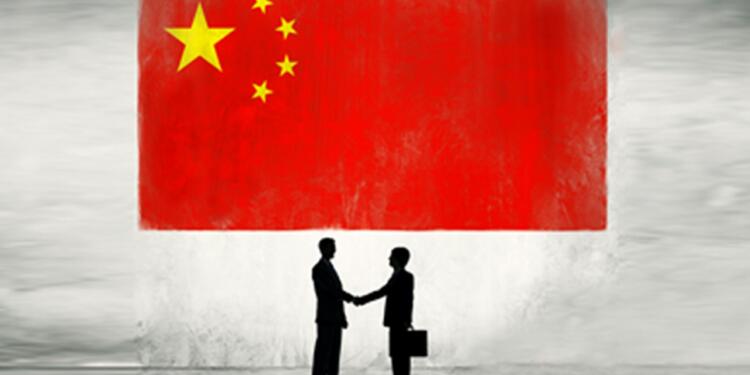There is a contrasting difference in the behaviour pattern of Indians when it comes to tackling our two adversaries Pakistan and China. Saving a few things, Pakistan has nothing substantive to offer for India. Its politicians and known faces constantly spew venom. On the Indian side, the rhetoric ranges from rationalism to jingoism, banning anything and everything including songs or singers from whom Bollywood copies without shame. But but China enjoys an uncanny ignorance or forgiveness from us.
Is India prepared to tackle Chinese economic subversion?
In case of dealing with China – nationalism, hard feelings for our sworn adversary and greatest threat China gets subsided. And it is replaced by economic considerations and TINA factor. TINA stand for ‘there is no alternative’. Obviously there are alternative to everything in today’s time. It is just another version of excuses to strangulate national interest and drain our resources to fatten Winnie-the-Pooh, Xi Jinping.
Every now and then, boycott Chinese products pays dividend but a small win here and there doesn’t change the larger picture. The fact is that Indians have to raise the fences against Chinese intrusion in our economy. Highlighting the same, the India Cellular and Electronics Association (ICEA) has recently raised red flags against Chinese firms. The ICEA has advised the Indian government to create policies that prevent China from dominating the mobile device supply chain.
Also read: India’s IT ministry wants Indian smartphones to grow but not at the expense of Chinese pocket bombs
First things first, ICEA is the apex industry body of mobile and electronics industry in India. The body comprises of manufacturers, brand owners, technology providers, distributors, and retail chains of mobile handsets and electronics.
It has cautioned the government against encouraging new Electronics Manufacturing Services (EMS) firms that are headquartered in China to operate in India. It added that these Chinese firms could end up dominating the supply chain. Apparently, the majority of the components used to create mobile devices come from China.
To substantiate its arguments, the ICEA made a presentation. According to ICEA, India now has large global EMS players, including those from Taiwan and the United States, to meet its own requirements and exports. Apart from these global players, India has homegrown players that could meet the requirements within India.
ICEA also argued that there is no need to allow newer players from China The apex industry body has suggested that India should impose an equity cap of 24% on all those Chinese EMS companies that want to establish a manufacturing facility in India. Further, all China-based EMS companies operating in India should be asked to bring down their stake below 49 percent.
Also read: India is going to ban cheap Chinese smartphones
Currently, there are numerous Chinese smartphone brands that are operating in India, yet they assemble their phones from Chinese players and encourage and nurture Chinese firms. The association wants this to be changed to boost domestic players, or that these Chinese firms operating in India should diversify their assembly lines rather than encourage Chinese firms alone.
For example, Chinese brands like Xiaomi use components from both Foxconn and Chinese EMS player DBG to make phones. Similarly, EMS players like Huaqin, Longcheer, and Wingtech have been aiming to play a larger role in India. Currently, they collectively account for almost 75 percent of the smartphone shipments globally. On the domestic front, there is the homegrown Dixon Technologies. It assembles mobile devices, TV sets, laptops, etc.
Mobile phone exports surge, but is everything as it seems?
Recently, the ICEA reported that India has already exported mobile phones worth $10 billion (roughly Rs 82,000) in the financial year 2023, which ends on March 31st. The export of mobile phones clearly shows that India is on the right track.It is all set to achieve the goal of exporting Rs 1 lakh crore’s worth of mobile phones by 2023.
One of the main reasons for this success is the large number of phones that are “Made in India,” with just one percent of mobile phones being imported and the remaining 99 percent produced locally.
An ICEA official stated that by the end of January, the exports were around USD 8.5 billion. While exports were estimated to have reached approximately USD 9.5 billion in February.Compared to this, India recorded mobile phone exports worth USD 5.5 billion in 2021–22.
According to the official, the mobile phone industry will surpass $40 billion in manufacturing output, with 25% exports at $10 billion.
Also read: After destroying Chinese apps in India, PM Modi is now going after Chinese smartphones
On account of the PLI scheme, global mobile manufacturing giants like Apple and Samsung have ramped up their production in India. Both of them have played a major role in these export numbers. As per ICEA data, around 50% of total exports were made by Apple’s ‘Make in India’ smartphones alone. Similarly, Samsung came in second place and exported nearly 40% of the total mobile phone exports in FY2023.
India currently exports mobile phones to the top five countries in the world: the United Arab Emirates, the United States, the Netherlands, the United Kingdom, and Italy. The government is working to strengthen the ecosystem of electronic manufacturing beyond mobiles to increase India’s global market share in hearables and wearables, IT hardware, and electronic components.
Now, don’t let these promising numbers fool you. While it is good that Make in India is booming and global giants are investing in India, But India has to ramp up and tweak its policies based on these statistics.
Firstly, India has to improve its competitiveness as compared to Vietnam which is a fierce competitor in the electronics manufacturing industry. In the same time period, Vietnam exported electronics goods worth $130 billion. So, our success has to be seen in the larger context and there are ample room to increase our export pie.
Second, India must provide the necessary assistance to its domestic players and draught policies accordingly. As previously stated, Apple and Samsung virtually dominate India’s export sector. For boosting our domestic players, the recommendations of ICEA seem to be the first step, which is to limit the Chinese equity in joint ventures.
Support TFI:
Support us to strengthen the ‘Right’ ideology of cultural nationalism by purchasing the best quality garments from TFI-STORE.COM































